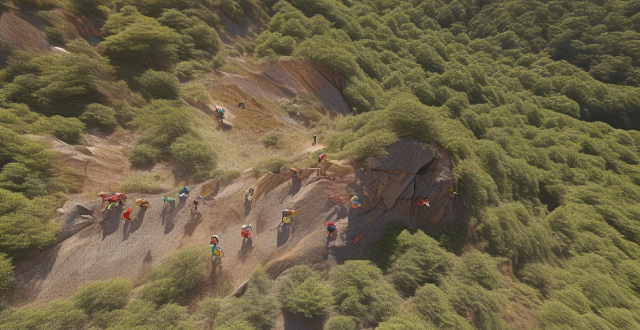Improving endurance for climbing steeper mountains involves regular training, proper breathing techniques, hill repeats, gradual difficulty increase, maintaining hydration and nutrition, and using proper gear and techniques.

How Can I Improve My Endurance for Climbing Steeper Mountains?
Climbing steeper mountains requires a significant amount of endurance, both physical and mental. Here are some tips to help you improve your endurance for climbing steeper mountains:
1. Train Regularly
- Cardiovascular Fitness: Incorporate activities like running, cycling, or swimming into your routine to increase your cardiovascular fitness. This will help you build the stamina needed for longer climbs.
- Strength Training: Focus on exercises that target the major muscle groups used in climbing, such as legs, back, and core. This will help you maintain stability and power during your ascent.
2. Practice Proper Breathing Techniques
- Deep Breathing: Learn to take deep breaths from your diaphragm rather than shallow breaths from your chest. This will help you oxygenate your blood more efficiently, allowing you to climb at a higher intensity for longer periods of time.
- Rhythmic Breathing: Develop a rhythmic breathing pattern that works for you, such as inhaling for three steps and exhaling for two. This can help you maintain a steady pace and conserve energy.
3. Incorporate Hill Repeats into Your Training
- Find a Steep Hill: Look for a hill with a gradient similar to the mountain you plan to climb. This will allow you to simulate the actual climbing experience during your training sessions.
- Perform Intervals: Walk or run up the hill at a challenging pace, then jog or walk down slowly to recover. Repeat this process multiple times, gradually increasing the number of intervals and reducing recovery time between them.
4. Gradually Increase the Difficulty
- Start Slow and Steady: Begin by climbing smaller hills or mountains before attempting steeper ones. This will help you build confidence and endurance without overwhelming yourself initially.
- Increase Elevation Gradually: Once you feel comfortable with a certain elevation gain, challenge yourself by climbing higher peaks or adding more distance to your hikes. Remember to listen to your body and avoid pushing yourself too hard too quickly.
5. Maintain Proper Hydration and Nutrition
- Stay Hydrated: Drink plenty of water before, during, and after your climbs to prevent dehydration, which can lead to fatigue and decreased performance.
- Fuel Your Body: Eat a balanced diet rich in carbohydrates, proteins, and healthy fats to provide sustained energy for your climbs. Don't forget to pack snacks like nuts, granola bars, or fruit for quick energy boosts during your ascent.
6. Use Proper Gear and Techniques
- Choose Suitable Footwear: Invest in comfortable, supportive hiking boots that fit well and provide adequate traction on various terrains.
- Learn Proper Climbing Techniques: Study proper foot placement, weight distribution, and pacing techniques to maximize efficiency and minimize strain during your climbs. Consider taking a climbing course or hiring a guide to learn these skills.
By following these tips and consistently practicing them, you can significantly improve your endurance for climbing steeper mountains. Remember to listen to your body and progress at a pace that feels comfortable for you. Happy climbing!